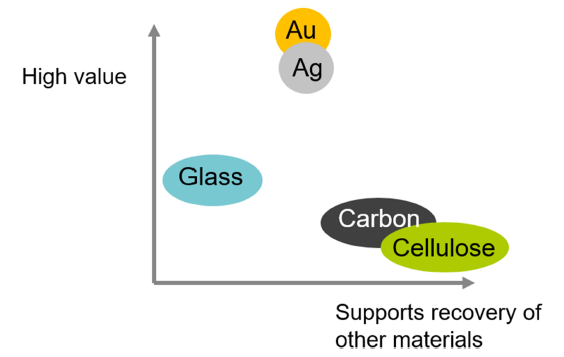Harnessing Bio-based Materials in Solar Cells

Researchers are exploring the use of bio-based materials to enhance the performance and sustainability of solar cells.
Bio-based materials can serve as both passive and active elements in solar cells. They can function as substrates, electrolyte scaffolds, and photo-electric converters. These materials offer functionalities that conventional materials cannot, such as superior optical properties and light management capabilities. Plant-based materials like wood, cellulose nanofibers, and nanocrystals can be tailored to exceed the performance of glass and common plastics.
You can also read: Strategies for Managing Solar Panel Waste
Advantages of Plant-based Materials
Plant-based materials offer several advantages over traditional materials. Manufacturers can produce them with lower embedded energy. Also, by utilizing these materials, manufacturers can reduce both energy and material costs. This is particularly beneficial in roll-to-roll mass production of photovoltaic devices. Moreover, using bio-based materials enhances sustainability by supporting recycling. Recent studies show that substrates play a major role in the viability of the recycling process. For example, conventional conductive glass substrates result in too small a concentration of rare metals like Au, Ag, and Pt for economically viable recovery. In contrast, manufacturers can simply burn plant-based substrates, which concentrates the rare metals and facilitates their recovery.

The value of the materials and how they support recovery of other materials in solar cells. Courtesy of Bio-based materials for solar cells.
Transparent Wood for Solar Systems
The process to transform wood into a transparent substrate involves chemically removing lignin and then filling the fiber lumens with a refractive index-matching polymer, in this case PMMA, making the composite transparent. Researchers have fabricated perovskite solar cells (PSCs) directly on transparent wood, achieving an efficiency of 16.8%. This efficiency is quite close to that of a similar device built on glass, which reaches 18.9%.

Transparent wood used as a substrate for PSCs. Courtesy of Optically Transparent Wood Substrate for Perovskite Solar Cells.
Challenges and Opportunities
Despite many benefits, challenges exist with using plant-based materials in solar cells. For instance, researchers need to improve their stability and durability. Moreover, they must ensure these materials meet the structural and functional requirements of photovoltaic devices. Additionally, the fabrication process includes depositing an electrically conductive layer, which is highly influenced by the substrate’s surface roughness.
Consequently, high surface roughness significantly impacts the quality of deposited electrodes. Uneven surfaces can create regions with varying electrical conductivity, leading to hotspots and lower-than-average conductivity. If the roughness is severe, it can even prevent the formation of an electrically continuous layer.
Typically, cellulose substrates exhibit higher surface roughness compared to glass, PET, and PEN. This variation depends on the size of the cellulose fibers used to form the films, ranging from rough regular paper to nano-sized cellulose films. Therefore, solving these concerns will make bio-based materials more viable for solar cell applications.
The future is Bio-based
Future research should focus on addressing the surface roughness and gas transmission properties of plant-based substrates. By improving these characteristics, researchers can further enhance the performance and durability of bio-based solar cells. Innovations in bio-based materials could also lead to their use in novel photovoltaic applications, such as printed electronics and flexible solar cells. As research continues, the potential for bio-based materials in the solar cell industry will likely expand, leading to more sustainable and efficient energy solutions.
